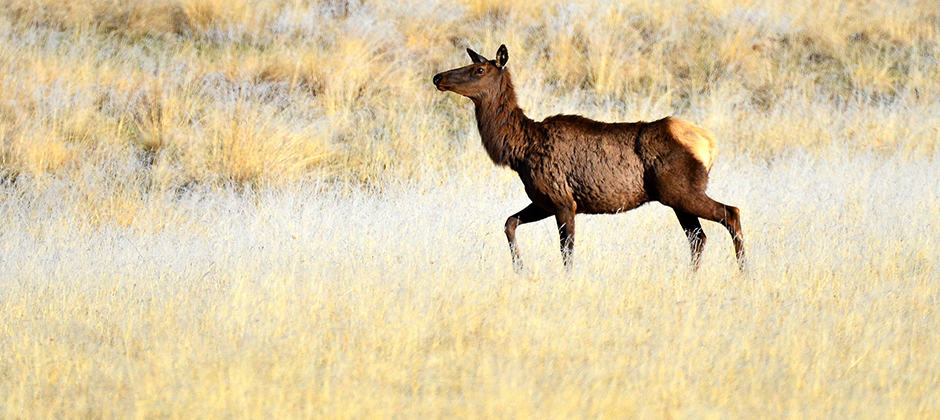Share this article
JWM: Wolves reduce elk survival — but they’re not alone
As gray wolf populations rose in Idaho, hunters became concerned about what those predators on the landscape might mean for elk numbers. As researchers looked into it, they found a complicated picture that, in the sharply divided world of wolf management, had something for everyone to either latch onto or take issue with.
Decreasing wolf pack size would likely increase elk survival, they found, but mountain lions might have an even larger impact, and other factors, like summer and fall forage, may also play crucial roles.
“There’s kind of something for everyone in there, and that’s OK, because it’s reflecting the real complexity of the system” said Jon Horne, senior wildlife research biologist at the Idaho Department of Fish and Game and lead author on the paper published in the Journal of Wildlife Management.
Horne and his team compiled 15 years of data on Idaho’s wolf (Canis lupus) and elk (Cervus canadensis) populations to create predictive models to see how wolf pack size and other factors affected elk survival.
They found pack size and snow depth had the largest effect on the risk of mortality for adult female elk. Predation was the number one cause of known-fate mortalities — far greater than starvation. By reducing pack size, they concluded, managers could increase elk survival, especially in places where the snow is deepest.
“I was surprised that the signal for wolf pack size was as strong as it was,” Horne said. But he was also taken aback by the role that mountain lions appear to play. Wolves were responsible for 32 percent of known-fate mortality among adult females, but mountain lions (Puma concolor) accounted for 35 percent. The differences were starker among calves, with wolves claiming 28% of known deaths compared to 45% from mountain lions. As previous studies found, researchers noted that wolves tended to select older females and smaller calves while mountain lions showed little preference.
“The take-home message is that mountain lions are likely killing at least as many elk if not more,” Horne said.
Other factors, like forage quality, also played key roles, researchers found. Calf size was the biggest predictor of survival, Horne said, suggesting that forage quality could also play a role in increasing elk herds.
Because the study covered the entire state, it doesn’t address regional dynamics, he said. In some places, wolves, mountain lions and forage may play greater or less roles than other areas.
And while it shows that managing wolf pack size can affect elk populations, it also paints a more complicated picture.
“What we’re realizing now is that to really understand these systems, we have to treat them as multiple-predator, multiple-prey systems,” he said.
This article features research that was published in a TWS peer-reviewed journal. Individual online access to all TWS journal articles is a benefit of membership. Join TWS now to read the latest in wildlife research.
Header Image: A recent study looked at how wolf pack size and other factors affected elk survival. ©Larry Lamsa








